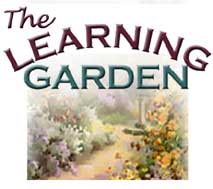
From Seed to Seed:
Plant Science for K-8 Educators
 |
From Seed to Seed: |
|
|
We all know what a leaf is. Although
there are many variations, most leaves are composed of a thin sheet-like
blade attached to the stem with a leaf stalk, or
petiole (PEH-tee-ole; La. petiolus = stalk). At the
base of the petiole (where it attaches to the stem) is the axillary
bud. On some plants, the axillary bud is covered by a structure
called the stipule. The diagrams
below represent a typical simple leaf and compound leaf. A simple leaf is an undivided leaf. The axillary bud is located at the base of the petiole of the individual leaf.
A leaf whose blade is divided into several distinct leaflets is a compound leaf. Notice that the axillary bud is not at the base of each individual leaflet but rather at the base of the petiole that the leaflets are attached to. Different plants' leaves vary in:
Climate, location, and competition from other plants all affect a leaf's ability to do its job-capture light. For example, plants growing in shaded environments often have relatively large leaves to maximize the surface area exposed to the limited sunlight. On the other hand, the grasses in open prairies get plenty of sunlight, but they must contend with winds that can blow plants over and break their stems. A grass plant's tall, narrow leaves are less likely to be torn by the wind than are broad, sail-like leaves. Of course there are no hard-and-fast rules, and there are plenty of shade-loving plants with small leaves! |
||||
|
Made possible by a grant from Oracle Corp. Copyright 2001, National Gardening
Association, Inc. For questions regarding this web site, contact Webmaster |